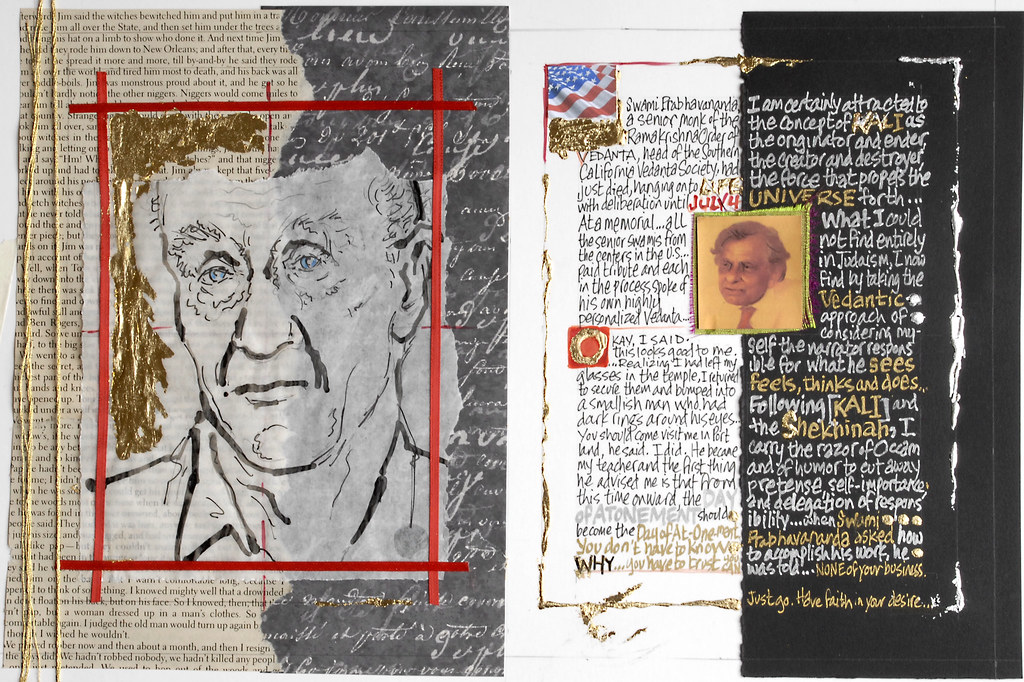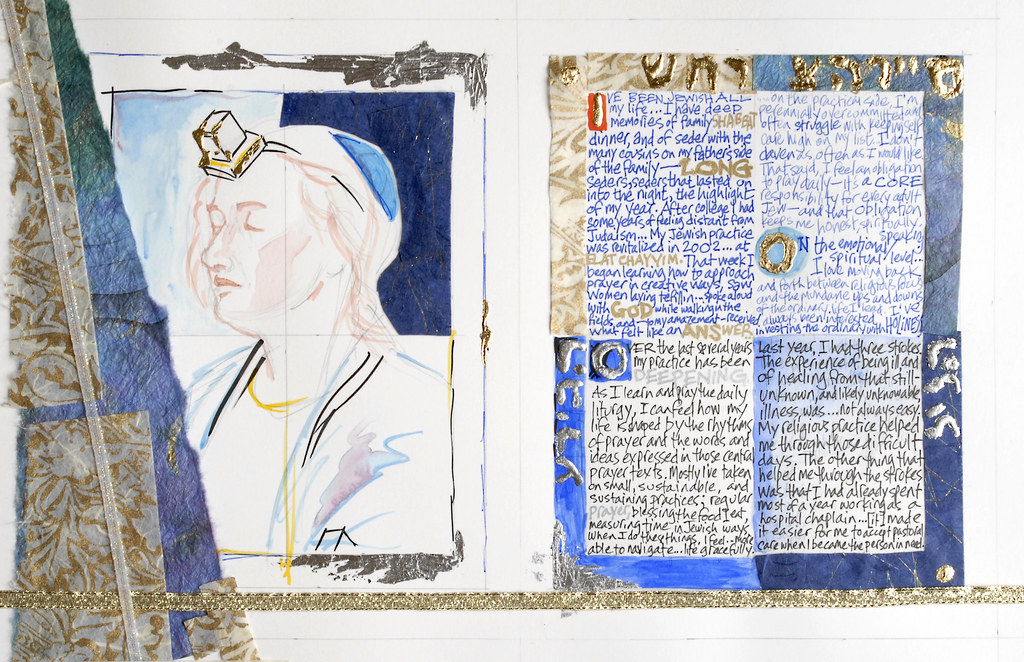I've been steeping and stewing on the self-portrait portion of this semester's class, and have been feeling a little anxious. I've been working so hard I was feeling dried out, wondering if I'd run the well dry.
Thank goodness the spring that feeds the well of creativity keeps flowing, whether I'm in an arid phase or not.
I had a big, juicy dream last night, and in the interest of keeping the compost freshly turned, I'm posting it -- and accompanying random notes, all unfinished and raw -- here.
For your puzzlement, your enjoyment, your whateverment. Seems like there's lots going on beneath the surface after all.
*****
Dream notes
I was living in some beautiful large city—unnamed, but “in the heartland”—and I went to a very beautiful suburb to see an art exhibit by the potter Gary Soto and his wife. (Gary Soto is a poet in
real life, and
Ishmael Soto is a local Austin potter.) In the dream, they were friends of mine. A
Craftsman-style house was the gallery, and walking in I expected to see pots, but didn’t. I saw, however, the most beautiful modern flattened
barrel-vaulting (think of 2’ wide ribs, slightly bowed down, spoon-polished in a very clean way and at the joints almost suede-like matte) for the ceiling. At first I thought it was burled wood, but then realized this was the ceramic work—a sky of earth,
smoke-swirled and just gorgeous. I met up with Gary and his wife; Gary was a lean and witty Hispanic man, his wife was a sharp-featured, curly-blonde-haired-blue-eyed slender German woman who had such a melodious voice I asked if she were a singer. She was, and she sang some bits of beautiful soprano-toned
lieder. We had a very nice chat, and they told me I needed to see the Children’s Art Museum (downstairs in the basement level.) As I went down the first flight of stairs (again, all was light, with honey-colored wood and the most open/serene feeling about it) I saw the museum shop. I looked in, and saw a fantastic ring—of pale green, almost light-jade-colored
chalcedony, architecturally carved and with the center a delicately sculpted carving of the Tablets of The Law as a shield in front of a medieval synagogue. I decided to buy it, and was told by my friends I could wear it in lieu of my wedding ring—Murry wouldn’t mind. And then the alarm went off, and I woke to go to work.
Content:
Chalcedony was one of the stones on the High Priest’s
ephod or breastplate.
From
http://www.eifiles.cn/js.htm"In 1272, while in western China Marco Polo wrote, “Chalcedony and jasper, which are taken for sale to Cathay (the populous eastern provinces), and such is their abundance that they form a considerable commerce.” This is a key, for the gemstones that Marco Polo thought were chalcedony and jasper are in fact white jade and spinach jade from Xinjiang Province in west China. These two nephrite jades have colours similar to chalcedony and jasper, (familiar stones in Marco Polo’s home country Italy). This helps us to identify both jewels from Revelation 21. CHALKEDÓN is white jade, and ÍASPIS is spinach green jade. Jade jewels are costly; the white and green jades are both elegant jewel stones and well suited to carving. Modern chalcedony gets its name from Chalcedon, an ancient Greek seaport of the eastern Aegean Sea known for the jewel trade. But Pliny the Roman historian described CHALKEDÓN as different from modern chalcedony. (In his time
white jade was evidently marketed under that name.)"
The white jade relates to the tribe of Dan. Dan—a tribe of great judges, a tribe associated with serpent energy, a tribe “not sealed” because of its affinity for pagan practices.
From
http://tribes.tribe.net/darkgoddesses/thread/37849a99-539a-4f46-939f-16ee1cb2a1ce
“Writers of the Old Testament disliked the Danites, whom they called serpents (Genesis 49:17). Nevertheless, they adopted Dani-El or Daniel, a Phoenician god of divination, and transformed him into a Hebrew prophet. His magic powers were like those of the Danites emanating from the Goddess Dana and her sacred serpents…. Daniel was not a personal name but a title, like the Celtic one.”
Daniel was the dream-interpreter, the one who acquired power through “translating” dreams—and winning the confidence of the king.
From the Tanakh, the Daniel section:
“MENE MENE, TEKEL UPHARSIN.
This is the interpretation of the thing: MENE, G-d hath numbered thy kingdom, and brought it to an end.
TEKEL, Thou art weighed in the balances, and art found wanting.”
What did the words literally mean? Per Wikipedia, in the verb form, they were: mene, to number; tekel, to weigh; upharsin, to divide - literally "numbered, weighed, divided".



